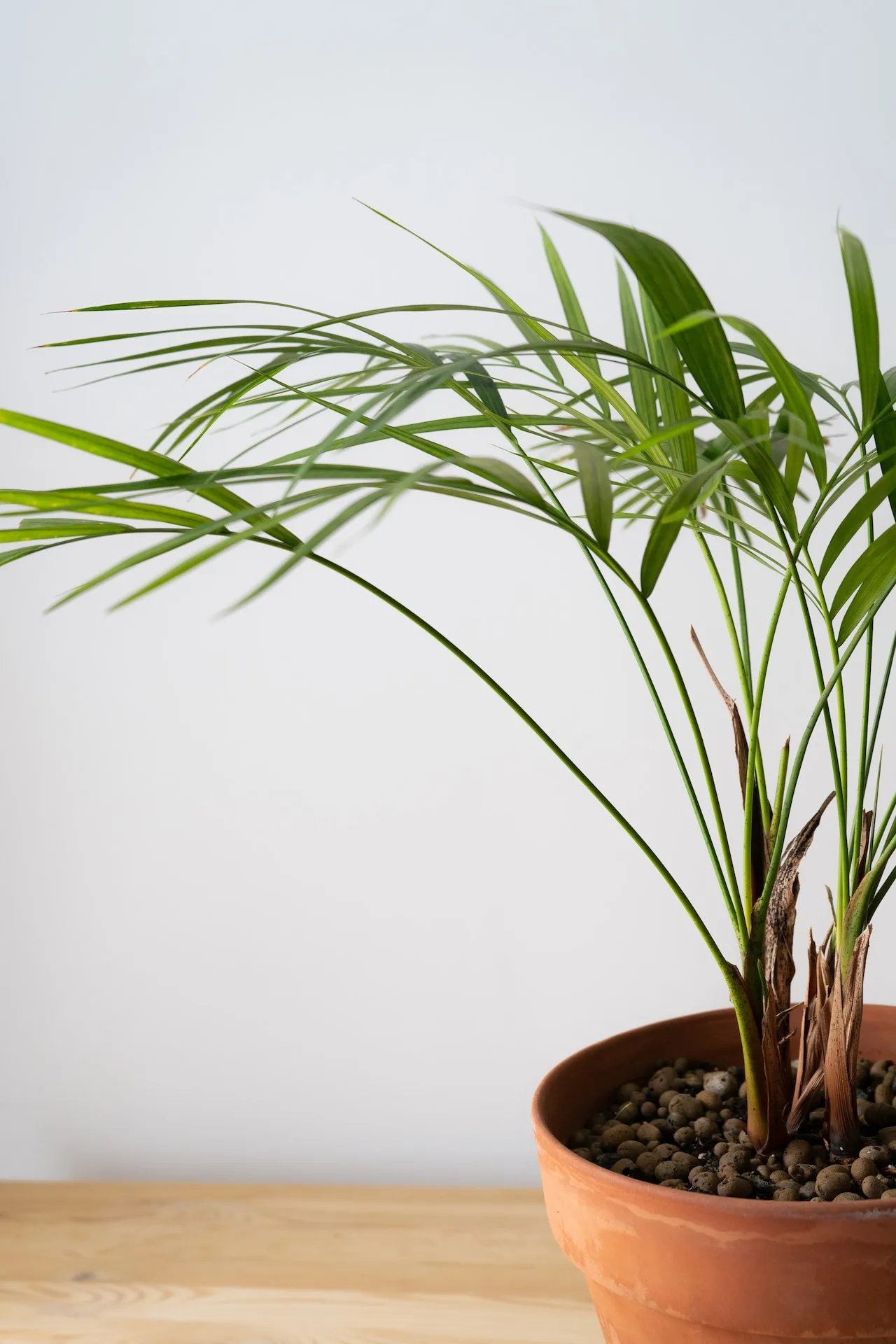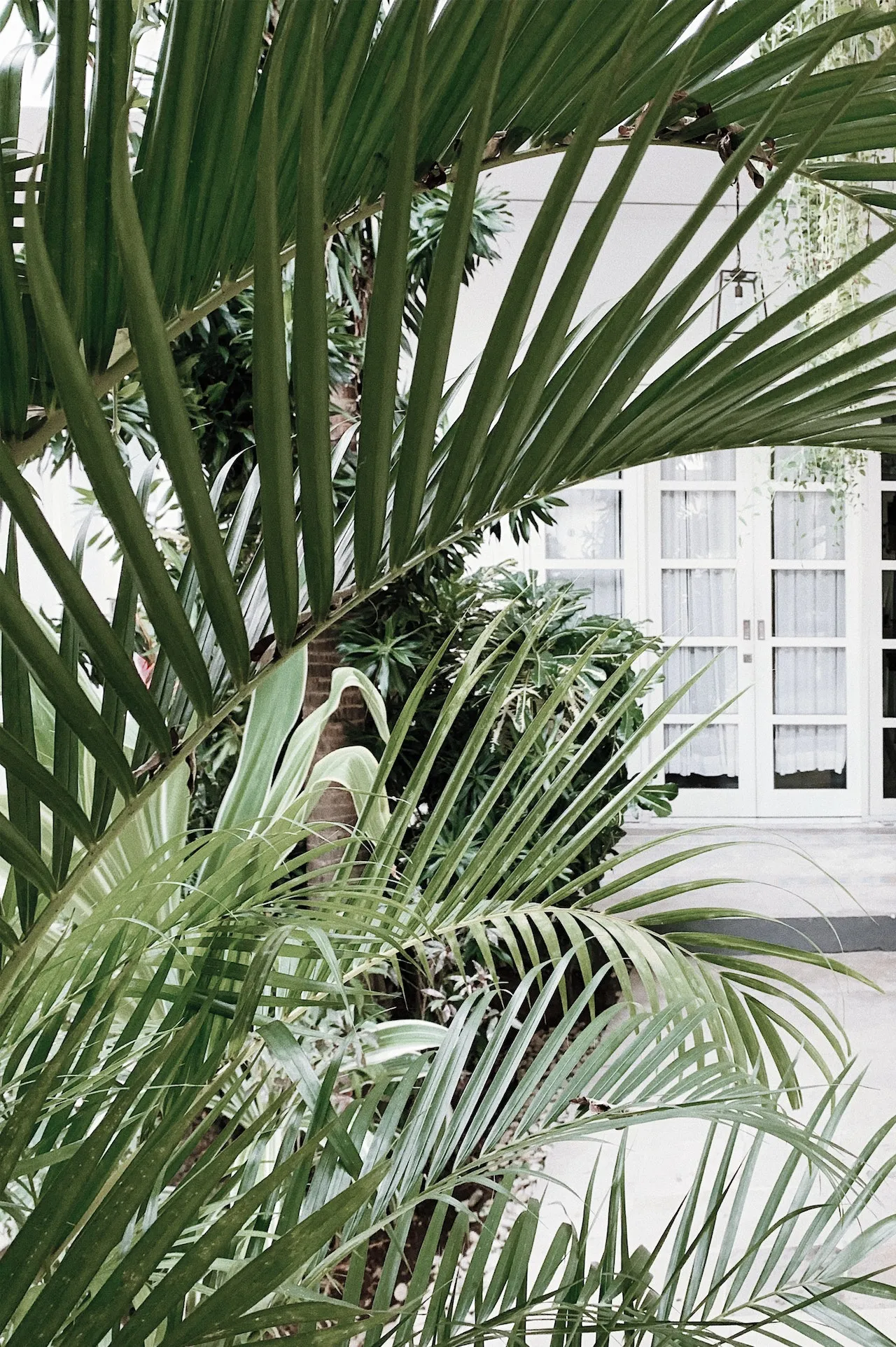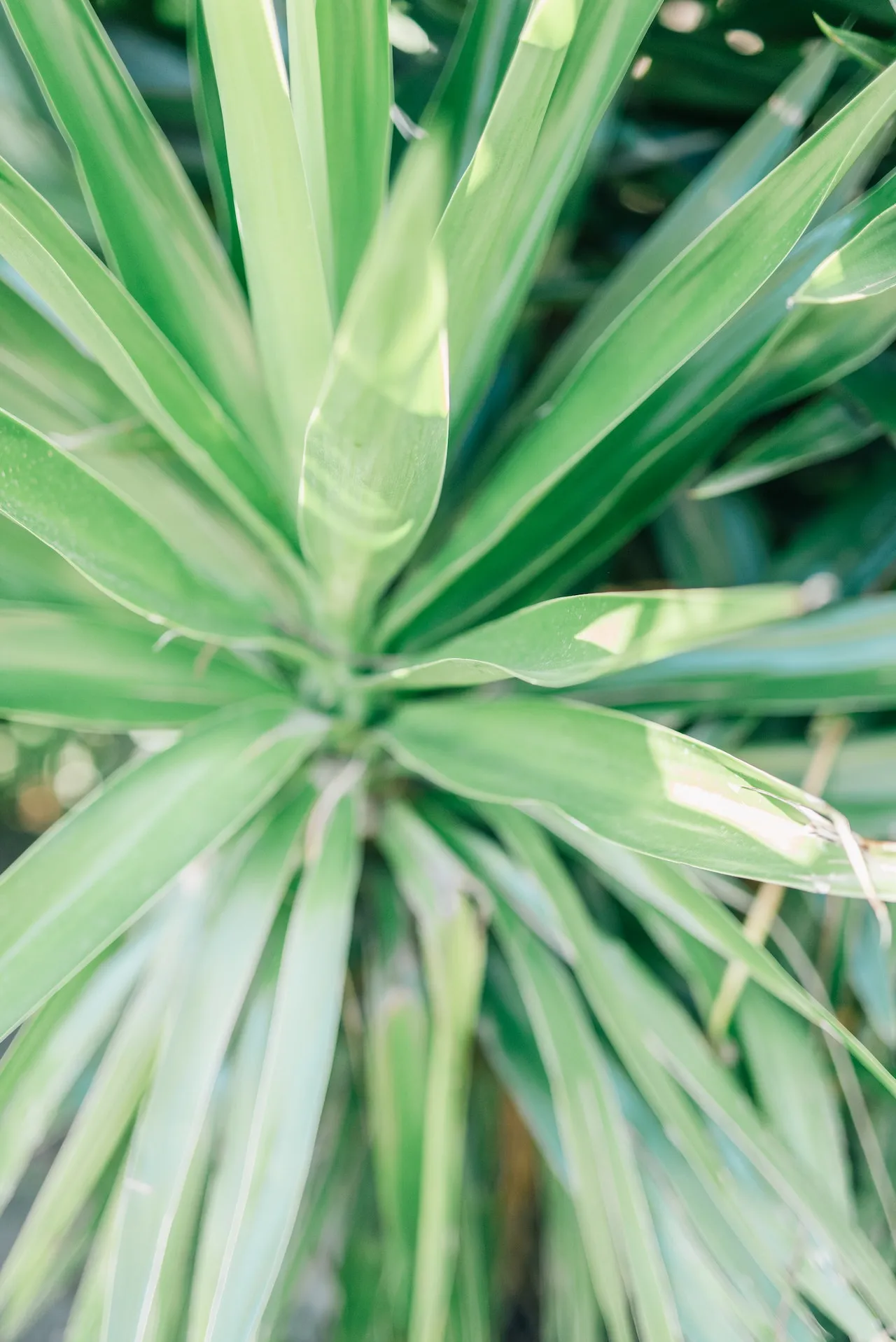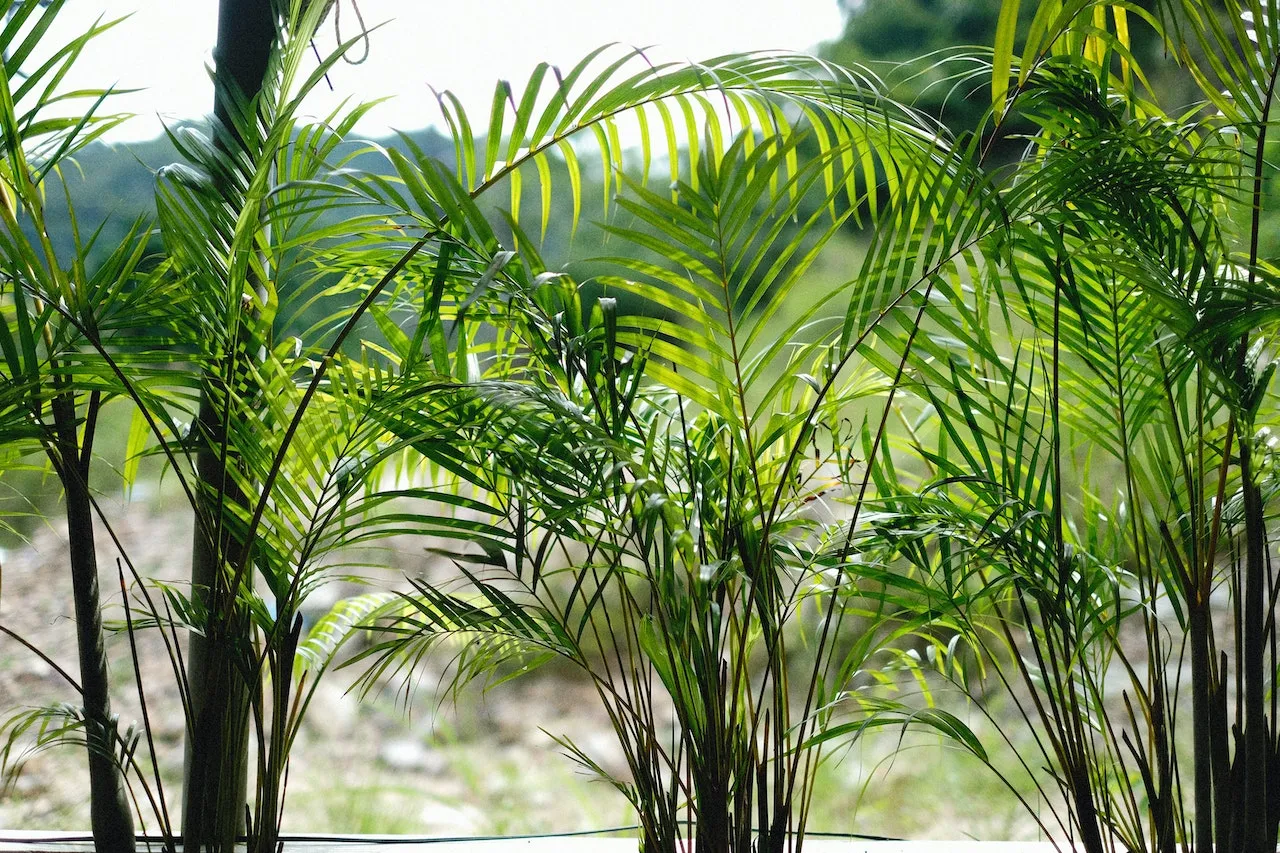Areca palms, with their graceful fronds and tropical charm, have become a popular choice for balcony gardens. These lush, vibrant plants not only add a touch of natural beauty to your outdoor space but also offer numerous health benefits. However, successfully nurturing Areca palms in a confined environment can be a challenge without the right knowledge and care. If you’ve been struggling to keep your balcony garden Areca palms thriving, you’re in luck! In this blog post, we will unlock the secret to cultivating healthy and flourishing Areca palms in your balcony garden. Discover essential tips, tricks, and expert advice that will help you create an oasis of greenery and elevate your balcony’s aesthetic appeal. Say goodbye to withering leaves and hello to thriving Areca palms!
Choosing the Perfect Areca Palm Variety for Your Balcony Garden
When it comes to selecting the ideal Areca Palm variety for your balcony garden, there are several factors to consider. Firstly, consider the available space on your balcony. If you have limited space, you may want to opt for a compact Areca Palm variety that stays relatively small, such as the Dypsis lutescens ‘Petite’ or Chrysalidocarpus lutescens ‘Compacta’. On the other hand, if you have ample space and are looking to create a statement piece, larger varieties like the standard Dypsis lutescens or Chrysalidocarpus lutescens may be more suitable.
Another factor to consider is the lighting conditions on your balcony. Areca Palms thrive in bright, indirect sunlight. If your balcony receives ample sunlight throughout the day, you can choose any Areca Palm variety. However, if your balcony is shaded or receives limited sunlight, consider varieties that are more tolerant of low light conditions, such as the Dypsis decaryi or Chrysalidocarpus humilis.
Furthermore, take into account the climate in your region. Areca Palms are native to tropical regions and prefer warm and humid conditions. If you live in a colder climate, consider varieties that are more cold-hardy, like the Dypsis lanceolata or Chrysalidocarpus cabadae.
Lastly, consider the aesthetic appeal of different Areca Palm varieties. Some varieties may have slightly different leaf shapes, colors, or growth habits. Take some time to research and explore various options to find the variety that aligns with your desired visual impact for your balcony garden.
By considering factors such as space availability, lighting conditions, climate suitability, and aesthetic preferences, you can choose the perfect Areca Palm variety that will thrive and add beauty to your balcony garden. Remember to provide proper care and maintenance to ensure the long-term health and growth of your selected Areca Palm variety.
The Best Soil Mix for Healthy Areca Palms in Containers
Creating the right soil mix is crucial for promoting the health and growth of Areca Palms in containers on your balcony. To provide optimal conditions, start with a well-draining potting mix. A blend of peat moss, perlite, and vermiculite is an excellent base for Areca Palms as it ensures good drainage while retaining enough moisture.
To enhance the nutrient content of the soil, incorporate organic matter such as compost or well-rotted manure. This enriches the soil with essential nutrients and improves its overall structure. Alternatively, you can use a balanced slow-release fertilizer to provide a consistent supply of nutrients over time.

It’s essential to maintain a slightly acidic to neutral pH level in the soil, preferably between 6.0 and 7.0. Regularly monitor the pH using a soil testing kit and make adjustments if necessary. Acid-loving plants such as Areca Palms can benefit from the addition of peat moss or pine bark to lower the pH.
When planting or repotting your Areca Palm, ensure the container has drainage holes to prevent waterlogging. The size of the pot should accommodate the root system while allowing room for growth. Avoid using oversized containers as they can retain excessive moisture and lead to root rot.
Remember to regularly check the moisture level of the soil and water accordingly. Overwatering can be detrimental to Areca Palms, so allow the top inch of soil to dry out before watering again. Adjust the watering frequency based on environmental conditions and the moisture retention properties of your soil mix.
By using a well-draining potting mix with added organic matter, maintaining the appropriate pH level, and providing proper watering techniques, you can ensure that your Areca Palms thrive in containers on your balcony garden. Regularly monitor the health of your plants and make adjustments as needed to keep them vibrant and flourishing.
Lighting Requirements: Providing Adequate Sunlight for Your Areca Palms
Proper lighting is crucial for the healthy growth of Areca Palms in your balcony garden. These tropical plants thrive in bright, indirect sunlight. When placing your Areca Palms, it’s important to find a location on your balcony that receives filtered light throughout the day. Direct exposure to intense sunlight can scorch the leaves, so it’s best to avoid placing them in direct sunlight, especially during the peak hours of the day.
Consider the orientation of your balcony and the available light conditions. South or west-facing balconies tend to receive more direct sunlight, which may require you to create shade or filter the light. North or east-facing balconies often provide more suitable lighting conditions, as they receive indirect sunlight for a significant portion of the day.
If your balcony has limited natural light, you can supplement it with artificial light sources. LED grow lights or full-spectrum fluorescent lights can be used to provide the necessary light intensity and spectrum for Areca Palms. Position the lights at an appropriate distance from the plants to mimic the natural light conditions.
Regularly monitor your Areca Palms for signs of light deficiency or excess. If the leaves appear pale or start to yellow, it may indicate insufficient light. On the other hand, if the leaves become bleached or develop brown spots, it could be a sign of too much direct sunlight. Adjust the placement of your plants accordingly to find the right balance.
By providing adequate lighting conditions, whether through filtered natural light or artificial light sources, you can ensure the thriving growth of your Areca Palms in your balcony garden. Remember to observe your plants closely and make any necessary adjustments to optimize their light exposure for healthy and vibrant foliage.
Watering Techniques: Finding the Right Balance for Optimal Areca Palm Growth
Watering your Areca Palms correctly is essential for their thriving growth in your balcony garden. Achieving the right balance is crucial to prevent both under-watering and over-watering. Areca Palms prefer to be kept consistently moist, but they should never sit in waterlogged soil.
To determine the watering frequency, check the top inch of soil with your finger. If it feels dry, it’s time to water your Areca Palms. However, if the soil feels damp, hold off on watering until it becomes slightly drier. This approach helps prevent the risk of overwatering, which can lead to root rot and other issues.
When watering your Areca Palms, thoroughly saturate the soil until water drains out from the bottom of the pot. This ensures that the entire root system receives adequate moisture. Allow any excess water to drain away completely, as stagnant water can cause root problems.
Remember to consider environmental factors that affect the plant’s water needs. During hotter months or in drier climates, you may need to water your Areca Palms more frequently. In contrast, reduce watering during cooler months or if your balcony has high humidity levels.
In addition to regular watering, Areca Palms benefit from occasional misting or placing a tray of water near the plants. This helps create a more humid microclimate, replicating their natural tropical habitat.
To maintain the right balance, regularly monitor the moisture levels of your Areca Palms’ soil and adjust the watering frequency as needed. By finding the sweet spot between moist but not waterlogged soil, you can provide optimal conditions for the healthy growth of your Areca Palms in your balcony garden.
Fertilizing Areca Palms: Essential Nutrients for Vibrant Foliage
Fertilizing your Areca Palms is crucial for providing them with the essential nutrients they need to develop vibrant foliage in your balcony garden. Choosing the right fertilizer and applying it correctly can make a significant difference in the overall health and appearance of your plants.
When selecting a fertilizer, opt for a balanced, slow-release formula specifically formulated for indoor plants or palms. These fertilizers typically contain a mix of nitrogen (N), phosphorus (P), and potassium (K), along with other micronutrients. Look for a ratio of approximately 3:1:2 (NPK) or something similar.
During the active growing season, which is typically spring and summer, apply the fertilizer every two to three months. Follow the instructions on the fertilizer package for the recommended amount and application method. It’s important not to over-fertilize, as excessive nutrients can cause leaf burn or even harm the plant.
Before applying the fertilizer, thoroughly water your Areca Palms to ensure the soil is moist. This helps prevent potential root damage caused by the concentrated nutrients. Distribute the fertilizer evenly around the base of the plant, avoiding direct contact with the stems or leaves. After application, water the plants again to help dissolve and distribute the fertilizer into the soil.
Additionally, consider supplementing the regular fertilizer application with occasional doses of liquid organic fertilizer or seaweed extract. These organic options provide additional micronutrients and promote overall plant health.

Remember to adjust the fertilization schedule during the dormant season, typically fall and winter, when Areca Palms require fewer nutrients. Reduce the frequency to once every three to four months or follow the specific guidelines provided by the fertilizer manufacturer.
By providing the necessary nutrients through regular and balanced fertilization, you can ensure that your Areca Palms in your balcony garden develop lush, vibrant foliage. Regularly monitor the health and growth of your plants, and adjust the fertilization routine as needed to maintain their optimal condition.
Pruning and Trimming Areca Palms: Maintaining Shape and Health
Pruning and trimming are essential tasks for maintaining the shape and health of your Areca Palms in your balcony garden. Regular pruning helps remove dead or yellowing fronds, enhances the plant’s appearance, and promotes new growth.
Start by inspecting your Areca Palms for any signs of withered or discolored fronds. Using clean and sharp pruning shears, carefully trim these damaged or dead fronds at the base of their stems. Removing them not only improves the plant’s aesthetic appeal but also prevents the spread of any potential diseases.
When pruning, avoid cutting healthy green fronds unless necessary. Areca Palms rely on their leaves for photosynthesis and energy production. Removing too many healthy fronds can weaken the plant and hinder its overall growth. Only trim fronds that are clearly damaged, diseased, or obstructing the plant’s natural shape.
To maintain a balanced and symmetrical appearance, ensure that you trim fronds evenly on all sides of the plant. This helps promote uniform growth and prevents the development of an unbalanced or top-heavy look.
Also, check regularly for runners and branches at the base of your betel nut. A small sprout growing from the base of a plant. If desired, these branches can be carefully separated and propagated into new plants.
Remember to clean your pruning tools before and after each use to prevent the spread of diseases or pests. Wiping the blades with a cloth soaked in rubbing alcohol or a disinfectant solution is an effective way to sanitize the tools.
By regularly pruning and trimming your Areca Palms, you not only maintain their desired shape and appearance but also promote their overall health and vigor. Observe your plants closely, and perform necessary pruning tasks as needed to keep them looking their best in your balcony garden.
Pest Control for Areca Palms: Keeping Unwanted Visitors at Bay
Protecting your Areca Palms from pests is crucial for their overall health and vitality in your balcony garden. By implementing preventive measures and early detection, you can effectively keep unwanted visitors at bay.
Regularly inspect your Areca Palms for signs of common pests such as spider mites, mealybugs, scales, and aphids. Look for symptoms like discolored leaves, webbing, sticky residue, or tiny crawling insects. Early detection allows for prompt action and prevents the pests from causing extensive damage.
One effective method to control pests is through regular cleaning and maintenance. Remove fallen leaves and debris from around your plants, as they can harbor pests and provide a breeding ground. Wipe the leaves gently with a damp cloth or sponge to remove dust and discourage pests from settling.
Introducing beneficial insects like ladybugs or predatory mites can aid in controlling pest populations. These natural predators feed on common plant pests and help maintain a balance in your garden. Alternatively, you can use organic insecticidal soaps or horticultural oils to target pests while minimizing harm to beneficial insects.
To prevent pests from infesting your Areca Palms, maintain proper plant hygiene and avoid overwatering. Pests are often attracted to weak or stressed plants, so ensure your Areca Palms receive adequate sunlight, water, and nutrients to promote their vigor and natural defense mechanisms.
If a pest infestation becomes severe or persistent, consider using targeted chemical treatments as a last resort. However, exercise caution and follow the instructions provided by the manufacturer to minimize any potential harm to the environment or beneficial organisms.
By implementing preventive measures, maintaining plant hygiene, and using targeted pest control methods when necessary, you can effectively keep pests at bay and ensure the thriving growth of your Areca Palms in your balcony garden. Regular monitoring and early intervention are key to maintaining a pest-free and healthy environment for your plants.
Common Areca Palm Diseases and How to Prevent Them
While Areca Palms are generally resilient, they can be susceptible to certain diseases. Being aware of these common ailments and taking preventive measures can help ensure the health and longevity of your Areca Palms in your balcony garden.
A common disease affecting areca palms is root rot, which is caused by overwatering or poor drainage. To prevent this, make sure the plant is potted in well-drained soil and that the container has proper drainage holes. Avoid overwatering and wait until the top of the soil dries before watering again.
Another disease to watch out for is leaf spot, which manifests as brown or black spots on the foliage. Leaf spot is often caused by fungal infections, typically due to high humidity or water splashing on the leaves. To prevent leaf spot, avoid overhead watering and ensure proper air circulation around your plants. Remove and destroy any infected leaves promptly to prevent the spread of the fungus.
Mites and aphids can also pose a threat to Areca Palms. These small insects can cause leaf discoloration, curling, or distorted growth. To prevent infestations, regularly inspect your plants for signs of pests and take action at the first sight. Implementing proper hygiene practices, such as removing fallen leaves and debris, can help deter pests from settling in your garden.
Lastly, Areca Palms are prone to nutrient deficiencies, particularly of magnesium and potassium. To prevent deficiencies, regularly fertilize your plants with a balanced palm fertilizer according to the recommended schedule and dosage. Ensure that the fertilizer provides adequate amounts of essential micronutrients for optimal growth and foliage health.
By implementing preventive measures such as proper watering practices, maintaining good plant hygiene, monitoring for pests, and providing balanced nutrition, you can effectively prevent common diseases from affecting your Areca Palms. Regular observation and early intervention are key to maintaining the vibrancy and vitality of your plants in your balcony garden.
Areca Palm Propagation: Growing New Plants from Offshoots
Areca Palms can be easily propagated by utilizing offshoots, also known as pups, to grow new plants in your balcony garden. Propagating through offshoots is a reliable and efficient method that allows you to expand your collection or share plants with others.
To propagate an Areca Palm from an offshoot, carefully separate the pup from the mother plant using a clean and sharp knife or garden shears. Ensure that the offshoot has its own set of roots before separating it, as this increases its chances of successful growth. Gently untangle or remove any entwined roots to prevent damage.
Once separated, plant the offshoot in a pot filled with well-draining soil. Use a pot that is large enough to accommodate the root system of the offshoot. Place it at the same depth as it was originally growing, ensuring that the soil is firmly packed around the roots.
Provide the newly planted offshoot with appropriate care, including regular watering and adequate sunlight. Place it in a location that receives filtered or indirect sunlight to prevent stress on the young plant. Monitor the moisture levels of the soil and adjust the watering frequency accordingly, keeping it consistently moist but not overly saturated.
It’s important to note that the process of propagation requires patience, as it may take several weeks or months for the offshoot to establish itself and start showing signs of growth. Ensure that the environment remains conducive to its development by providing the necessary care and monitoring its progress.
By propagating Areca Palms through offshoots, you can create new plants and expand your green space in your balcony garden. This method allows you to continue the cycle of growth and rejuvenation, unlocking the secret to thriving Areca Palms in your garden while enjoying the fulfillment of nurturing new life.

Container Selection for Areca Palms: Size, Drainage, and Aesthetics
Choosing the right containers for your Areca Palms is crucial for their overall health and aesthetic appeal in your balcony garden. Consider three key factors: size, drainage, and aesthetics.
Firstly, select a container that provides enough space for the root system of your Areca Palms to grow. A larger container allows for better root development and prevents the plant from becoming root-bound. Aim for a pot that is at least 2-4 inches wider in diameter than the current root ball of your plant. This gives the roots ample room to spread and access nutrients.
Secondly, ensure that the chosen container has proper drainage. Areca Palms prefer moist but well-draining soil. Look for pots with drainage holes at the bottom to allow excess water to escape. Adequate drainage helps prevent waterlogged soil, which can lead to root rot and other issues. If your chosen container doesn’t have drainage holes, consider drilling some yourself or using a liner with drainage capabilities.
Lastly, consider the aesthetics of the container. Choose a pot that complements your balcony garden’s overall style and enhances the beauty of your Areca Palms. Opt for materials like terracotta, ceramic, or lightweight plastic, depending on your preference and the climate. Ensure that the container is sturdy and stable to withstand outdoor elements such as wind or accidental bumps.
When selecting the container, also consider the future growth of your Areca Palms. These plants can reach significant heights, so choose a container that can accommodate their eventual size and prevent the need for frequent repotting.
By carefully considering the size, drainage, and aesthetics of the containers for your Areca Palms, you provide them with a suitable home that promotes healthy growth and adds visual appeal to your balcony garden. Take the time to find the perfect containers that meet both the functional and aesthetic needs of your thriving Areca Palms.
Balcony Placement Strategies for Areca Palms: Maximizing Light and Space
Proper placement of your Areca Palms on your balcony is essential for their optimal growth and overall well-being. By considering sunlight exposure and space utilization, you can unlock the secret to thriving Areca Palms in your balcony garden.
Firstly, assess the sunlight conditions on your balcony. Areca Palms thrive in bright, indirect light. Ideally, place them in an area where they receive filtered sunlight or partial shade. Direct sunlight can scorch the leaves, while too little light can result in weak and leggy growth. Observe the sun patterns on your balcony throughout the day and position your plants accordingly.
If your balcony receives intense afternoon sun, consider placing your Areca Palms in a spot that provides some shade during the hottest hours. This can be achieved by using outdoor blinds, screens, or even sheer curtains to filter the sunlight. Alternatively, if your balcony is shaded for most of the day, position the plants where they can receive the maximum amount of available light.
Secondly, make efficient use of the available space on your balcony. Areca Palms are known for their graceful and feathery foliage, which adds a touch of tropical elegance to any space. Allow sufficient room for their arching fronds to grow without obstruction. Arrange the pots strategically to create an aesthetically pleasing display while ensuring that each plant has enough space for healthy growth.
Consider using elevated platforms, hanging baskets, or wall-mounted planters to maximize vertical space. This not only adds visual interest but also allows you to grow more Areca Palms in limited square footage. Ensure that the weight of the containers and plants is well-distributed and does not exceed the load-bearing capacity of your balcony.

Lastly, monitor the microclimate on your balcony, including temperature and humidity levels. Areca Palms prefer a moderately humid environment, so consider misting the leaves occasionally or placing a tray of water nearby to increase humidity if necessary. However, avoid excessive moisture, as it can promote fungal growth or attract pests.
By strategically placing your Areca Palms on your balcony, you can maximize their exposure to suitable light conditions and make the most of the available space. Regularly observe and adjust their placement as needed to ensure they receive the ideal balance of light, space, and environmental conditions, thus unlocking the secret to thriving Areca Palms in your balcony garden.
Temperature and Humidity Considerations for Thriving Areca Palms
Temperature and humidity play crucial roles in the successful growth and thriving of Areca Palms in your balcony garden. Understanding and providing the appropriate environmental conditions can unlock the secret to their optimal health and vitality.
Areca Palms thrive in warm temperatures ranging between 65-85°F (18-29°C). It is important to keep them away from drafts or sudden temperature fluctuations, which can stress the plants. Ensure that your balcony provides a stable and comfortable temperature for your Areca Palms, avoiding exposure to cold drafts or extreme heat sources.
Humidity is another important factor to consider. Areca Palms prefer moderate to high humidity levels. While they can tolerate average household humidity, increasing humidity can enhance their growth and overall appearance. If your balcony has low humidity, you can raise the moisture levels by misting the leaves with water, placing a tray filled with water near the plants, or using a humidifier.
It’s important to note that excessive moisture or stagnant air can lead to fungal diseases or pest infestations. Therefore, maintaining a balance is crucial. Avoid overwatering the plants or allowing water to accumulate at the base of the pots, as it can lead to root rot. Regularly monitor the moisture levels of the soil and adjust your watering practices accordingly.
In regions with dry or arid climates, grouping your Areca Palms together can create a microclimate of increased humidity around the plants. This can be achieved by placing the pots close to each other or by incorporating other moisture-loving plants in the vicinity.
By providing your Areca Palms with a suitable temperature range and maintaining adequate humidity levels, you create an environment that mimics their natural habitat and promotes their thriving growth. Regularly monitor the temperature and humidity on your balcony and make adjustments as needed to ensure the well-being of your Areca Palms in your balcony garden.
Companion Plants for Areca Palms: Creating Beautiful Balcony Gardens
Incorporating companion plants alongside your Areca Palms in your balcony garden can not only enhance the visual appeal but also provide additional benefits such as improved air quality and natural pest control. When selecting companion plants, consider their compatibility with the growing conditions of Areca Palms and their ability to complement the overall aesthetics.
One popular choice for companion planting with Areca Palms is the Peace Lily (Spathiphyllum). With its elegant white flowers and glossy leaves, the Peace Lily adds a touch of sophistication to the tropical ambiance created by the Areca Palms. Additionally, Peace Lilies are known for their air-purifying qualities, helping to remove toxins from the surrounding environment.
Another excellent companion plant option is the Spider Plant (Chlorophytum comosum). With its arching variegated leaves, the Spider Plant adds texture and a cascading effect when grown alongside the upright Areca Palms. Spider Plants are also easy to care for and are known for their ability to help improve indoor air quality.
For those seeking a pop of color, consider including flowering companions such as Begonias or Geraniums. Their vibrant blooms can create a striking contrast against the lush green foliage of the Areca Palms. These flowering plants thrive in similar light and humidity conditions, making them suitable companions.
When selecting companion plants, ensure they have similar water and light requirements as Areca Palms. Avoid plants that compete for resources or have invasive tendencies. Additionally, consider the size and growth habits of the companion plants to ensure they don’t overshadow or overcrowd the Areca Palms.
By carefully selecting and incorporating compatible companion plants, you can create a harmonious and visually appealing balcony garden. The combination of lush Areca Palms with complementary foliage textures, colorful blooms, and air-purifying qualities can unlock the secret to a thriving and captivating oasis in your balcony garden.
Seasonal Care for Areca Palms: Adapting to Changing Conditions
To ensure the ongoing health and vitality of your Areca Palms in your balcony garden, it’s essential to provide seasonal care that adapts to the changing conditions throughout the year. By understanding the specific needs of Areca Palms during each season, you can unlock the secret to their thriving growth and long-term success.
During the spring and summer months, Areca Palms experience their active growth period. It is crucial to provide them with ample sunlight, ensuring they receive bright, indirect light for several hours a day. Regularly monitor the moisture levels of the soil and water consistently to keep it evenly moist. Fertilize the plants every four to six weeks with a balanced liquid fertilizer to support their growth.
As the temperatures rise during the summer, be mindful of potential heat stress. Shield the plants from direct sunlight during the hottest hours of the day, provide adequate ventilation, and avoid overwatering, which can lead to root rot. Misting the foliage or placing a tray of water nearby can help increase humidity levels.
In autumn, as the days become shorter and temperatures start to cool, Areca Palms enter a period of slower growth. Reduce watering frequency while ensuring the soil remains slightly moist. Adjust the plant’s position to maximize available sunlight as the sun’s angle changes. Inspect the plants for any signs of pests or diseases and take appropriate measures to prevent and treat them.
Winter brings cooler temperatures and lower light levels. Protect your Areca Palms from cold drafts and frost by moving them to a sheltered spot or using insulating materials. If indoor heating causes the air to become dry, consider using a humidifier or placing a tray of water near the plants to increase humidity.
Throughout the year, keep a watchful eye on your Areca Palms, observing their growth patterns, foliage condition, and overall health. Adjust your care routine accordingly to meet their specific seasonal requirements. By providing the appropriate care during each season, you can unlock the secret to thriving Areca Palms in your balcony garden, ensuring their continuous beauty and enjoyment throughout the year.
The Psychological Benefits of Areca Palms in Balcony Gardening
Beyond their aesthetic appeal and contribution to a lush balcony garden, Areca Palms offer numerous psychological benefits that can enhance your overall well-being. Engaging in balcony gardening with Areca Palms can be a therapeutic and rewarding experience, positively impacting your mental health and providing a sense of tranquility and connection with nature.
Firstly, tending to plants like Areca Palms allows for a sense of purpose and responsibility. Taking care of living organisms and witnessing their growth and vitality can instill a sense of accomplishment and pride. The act of nurturing and watching your Areca Palms flourish can boost self-esteem and provide a fulfilling sense of achievement.
Balcony gardening with Areca Palms also promotes relaxation and stress reduction. Spending time in nature has been shown to have a calming effect on the mind and body, reducing anxiety and improving overall mood. The gentle rustling of the palm leaves in the wind and the soothing green hues of the foliage can create a peaceful and rejuvenating environment right at your doorstep.
Additionally, the presence of plants, such as Areca Palms, has been connected to better air quality and higher oxygen levels. Improved focus, cognitive health, and cognitive performance may result from breathing cleaner air. The atmosphere that the Areca Palms generate is fresh and energising, which can improve mental clarity and encourage concentrate.
Furthermore, balcony gardening with Areca Palms can foster a deeper connection with nature and a greater sense of mindfulness. Engaging in the care of these plants encourages us to slow down, observe, and be fully present in the moment. It provides an opportunity to appreciate the beauty and intricacy of the natural world, fostering a sense of awe and gratitude.
In conclusion, the presence of Areca Palms in balcony gardening offers psychological benefits that extend beyond their visual appeal. By nurturing these plants, you can experience a greater sense of purpose, relaxation, improved air quality, and a stronger connection with nature. Unlock the secret to thriving Areca Palms in your balcony garden, and in turn, unlock the potential for enhanced mental well-being and a deeper appreciation of the world around you.

FAQs and Answers on Areca Palms
Q: Can Areca Palms thrive in a small balcony garden?
A: Yes, Areca Palms are well-suited for balcony gardens as they can adapt to container living. Ensure proper lighting, adequate watering, and regular fertilization to support their growth.
Q: How much sunlight do Areca Palms need?
A: Areca Palms prefer bright, indirect sunlight. Place them near a window or balcony where they can receive filtered light throughout the day. Avoid direct exposure to intense sunlight to prevent leaf burn.
Q: What is the ideal watering schedule for Areca Palms?
A: The areca palm has to be watered often to keep the soil wet on a regular basis. When the dirt on top of the plant appears dry, water it. Based on the local climate and humidity, adjust the frequency.
Q: How often should I fertilize my Areca Palms?
A: During the growing season (spring and summer), give your areca palms a balanced, slow-release fertiliser every two to three months. For effective application, according to the directions on the fertiliser package.
Q: How do I maintain the shape of my Areca Palms?
A: Prune any yellow or brown fronds regularly to maintain the plant’s appearance and health. Use clean, sharp pruning shears to remove dead or damaged leaves at their base. Avoid excessive pruning, as it may stress the plant.
Q: Are Areca Palms prone to pests or diseases?
A: Areca Palms can be susceptible to common houseplant pests like spider mites and mealybugs. Regularly inspect your plants for any signs of infestation and take appropriate measures, such as using insecticidal soap or neem oil, to control them.
Q: Can I propagate Areca Palms?
A: Yes, Areca Palms can be propagated by division or from offshoots. Carefully separate the offshoots or divide the root ball during repotting. Ensure each new plant has enough roots to establish itself in a separate container.
Q: What is the recommended temperature range for Areca Palms?
A: Areca Palms thrive in temperatures between 60°F to 75°F (15°C to 24°C). They are sensitive to cold drafts, so protect them from chilly winds or extreme temperature fluctuations.
Q: How tall do Areca Palms typically grow?
A: Areca Palms can reach heights of 6 to 10 feet indoors, but their growth rate varies depending on the care provided. Regular pruning and maintaining an optimal environment will help control their size.
Q: Are Areca Palms safe for pets?
A: Areca Palms are generally considered non-toxic to cats and dogs. However, it’s still recommended to keep pets from chewing or ingesting any part of the plant to prevent any potential digestive issues.
Remember, every Areca Palm may have specific needs, so closely monitor your plant’s health and adjust your care routine accordingly.

